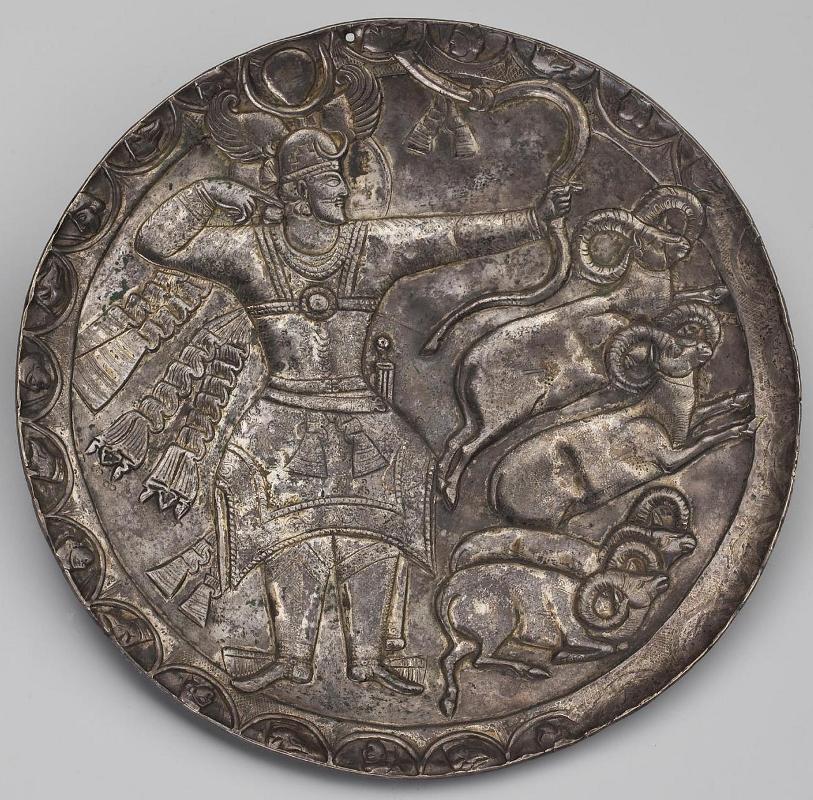
Try Amazon Audible Plus
The Tcherdyne Dish, 5th or 6th-7th centuries AD

A larger image of The Tcherdyne Dish, 5th or 6th-7th centuries AD. State Hermitage Museum, St. Petersburg. S-216.


Title: Dish with the Depiction of a King Hunting Argalis
Place of creation: Iran
Date: 6th century
Material: silver
Technique: chased and gilded
Dimensions: diameter. 24.6 cm
Acquisition date: Entered the Hermitage in 1936; handed over from the Local History Museum in Cherdyn
Inventory Number: S-216
State Hermitage Museum, St. Petersburg. S-216.
Dish with King of Kings Peroz (457-483) hunting.
Silver. Dia. 24.6 cm.
Found 1936 village of Anikovskaia, Perm provence with T & L no. 22. Inv. no. S-216.
Published: Trever and Lukonin no. 8; Scythian 1969, no. 84.
Source: washington.edu
Maurice Dimand, "A review of Sasanian and Islamic Metalwork, in 'A Survey of Persian Art'", Ars Islamica, vol. VIII, 1941, Fig. 2, p. 195, The Tcherdyne Dish, VI-VII centuries A.D., Hermitage Museum.
Referenced in Elsie Holmes Peck, "The Representation of Costumes in the Reliefs of Taq-i-Bustan." Artibus Asiae, Vol. 31, No. 2/3, 1969, Fig. 10. [With '6th-7th Centuries' caption].
'Very similar to the elephant rider's costumes and their contours is the robe with a wide border worn by the king on the Tcherdyne plate in the Hermitage Museum and dating from the same period. The ruler's costume is not seen from a completely frontal view so that one notices that after initially dipping down on the side in a sharp point, the hem rises in a semi-circle to drop again before rising a second time in the back. This is in fact the same outline created by the skirts of the courtiers in the boar hunt relief, although there the points of the skirt are not sharp.